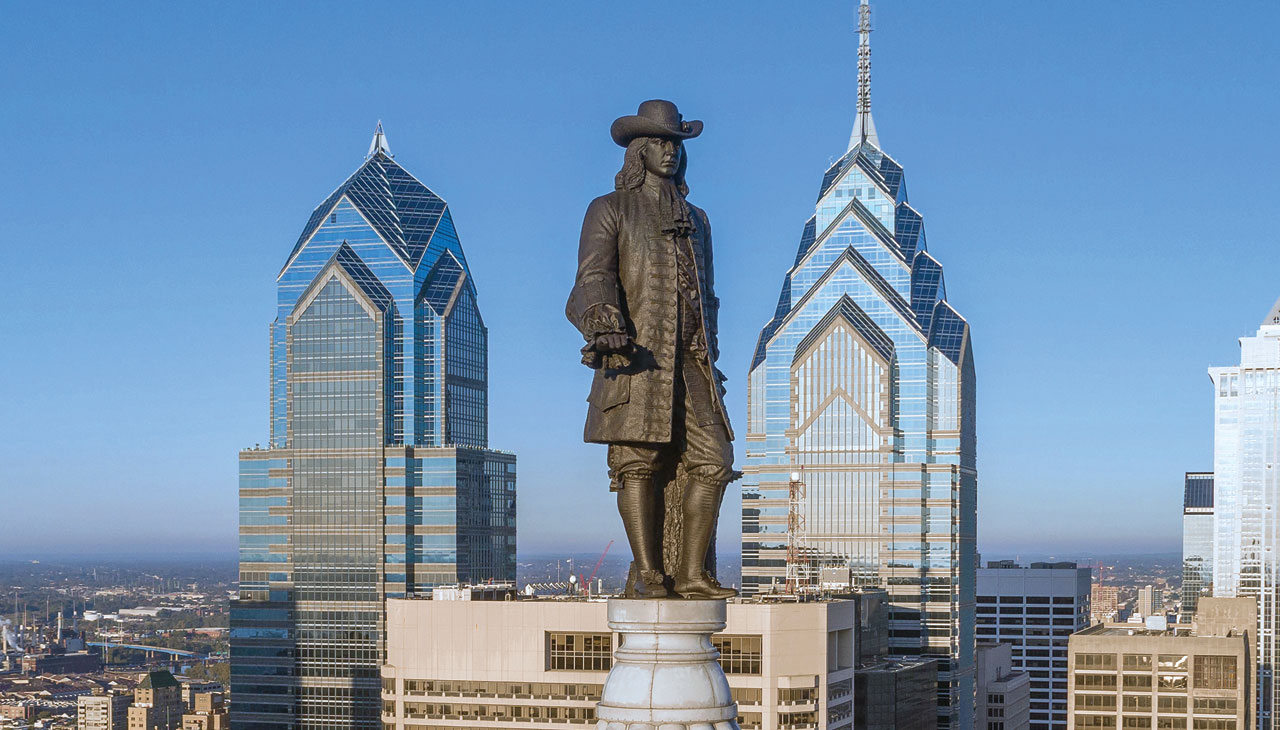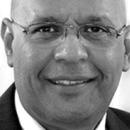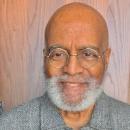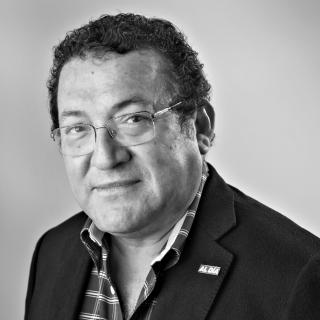
[OP-ED] William Penn Was Not Wrong
In the year number 1682 of our Lord, a young man, only 38 years of age, arrived at the Delaware River Port, today known as Penn’s Landing.
MORE IN THIS SECTION
In the year number 1682 of our Lord, a young man, only 38 years of age, arrived at the Delaware River Port, today known as Penn’s Landing.
He had a mandate from the King of England, Charles II, to establish a new British colony in the Americas that was going to be known later as “Pennsylvania” — because the ambitious new immigrant chose to use his father’s family name: The land of Mr. Penn, or Pennsylvania.
This stretch of new land, pretty simple and squarish, took the Delaware River as its Eastern border, and the Ohio River, near today’s Pittsburgh, as a marker for its Western border — natural frontiers of the small nation where great episodes of the U.S. history were about to unfold.
Gettysburg, for example, where 53,000 men killed each other during only three days, consecrating the battlefield President Abraham Lincon blessed with his secular prayer standing in this Holy Ground, indeed where the bloodiest clash of our Civil War, over 160 years ago, took place in Central Pennsylvania, starting one sunny day, on July 1, 1863.
171 years before, in 1682, the young man sent by the King of England, by the name of William Penn Jr., set his boots on the ground, and judged the land was good enough. He immediately pictured in his enlightened mind, while looking at the swamps and open fields by the Delaware River, the axis of a new city, one he decided to call the City of Brotherly Love, borrowing from the old Greek Language — two key elements of the new word: Phileo (Love) and Adelphos (Brother).
The City where Brother and Sisters Embrace Each Other and are Strong Enough to Love Each Other — no matter their differences in the practice of their religious faith, which also later created tolerance for political affiliation, although color of skin has proved to be intractable to resolve and settle.
The was, to put it in the simple manner needed for this simple op-ed article, the genesis of our city, which William Penn, a man who professed the Quaker religion, saw every one of his political steps as if inspired by Heaven or mandated by God.
He called Philadelphia, “The City of Brotherly Love,” but furthermore went to say his city, which existed only in his imagination, was also a “Holy Experiment” where God will rejoice to see his creatures building together, not just houses, but homes — warm places where children now born in America, not in the oppressed neighborhoods of the European cities where previous generation their families lived before in abject poverty and with a total lack of education.
Here in America, on the contrary, they could aspire to nobility status as long as they could prove their worth through individual effort.
The bottom line is that those immigrant parents who dared to cross the Atlantic Ocean did for the same reasons as the Latinos living in the Caribbean are also willing to risk their lives, attracted to the powerful promise and magnet America still represents: The better lives for my children and grandchildren, now U.S. citizens since their birth and with the capacity to rebuild America, our common home, once again.
The tradition survives to the day, wave after wave of uninterrupted immigration flows from all over the world, as constant throughout our history as the gentle waters that caress the beaches near the Delaware River’s mouth, where the sweet waters from our main Philadelphia river finally reach the salty Atlantic Ocean, near the City of Wilmington, less than 32 miles from South Philadelphia.
Delaware, the neighboring State to the South, was later called the “First State” because it was the first to ratify in 1787 the U.S. Constitution written in Philadelphia.
Pennsylvania, on the contrary, picked up the greater honor of being called “The Keystone State,” because a nation was imagined here and the written documents that materialize it in people’s imagination were drafted here:
The Declaration of Independence, signed by a group of courageous men, and made public on July 4, 1776, declaring war against the greatest Army of the World at that time, the British Empire infamous Red Coats. The U.S. Constitution, approved by 13 initial states on September 17, 1787, and, even more importantly, that cornerstone of our Democracy and brand new Republic — the Constitution’s First Amendment — the one that gave legitimacy to the simple right of individuals to free expression and practice of religious faith, without interference of the government, as only William could have dreamt it. That was four years later, on December 15, 1791.
The model was adopted here, and from here it was replicated throughout Western Civilization, even back to the monarchical powers of Europe, as a foundation mainly of the Republics born throughout the Americas — starting with those established in the Southern part of the American Hemisphere following the American Revolution example, ignited on Market and 5th Street, in Old City Philadelphia.
La Gran Colombia, in 1819, recognized by President James Monroe, and Mexico in 1825. All 15 others, from Guatemala down to Argentina, gained their own independence from the Spanish Empire, and finally the U.S., the older sister republic to the North, finally recognized them, granting full legitimacy to their existence as new and independent republics. Cuba was the last one in 1899.
While we remember this wondrous History facing the landmark election of this coming May 16th, 2023, for the number 100 Leader of Penn’s “Holy experiment,” the 4th Mayor of the City in 21st Century Philadelphia, we must reflect one single minute what got us started 341 years ago
While we remember this wondrous history facing the landmark city election coming on May 16, 2023, for the 100th Leader of Penn’s “Holy experiment,” the fourth Mayor of the City in 21st Century Philadelphia, we must reflect one single minute what got us started 341 years ago:
“William Penn’s “Holy Experiment” was a “pluralistic approach that attracted a diverse range of people from many faiths,” respecting each other and coexisting civilly, one next to the other, as we read today in an encyclopedia entry.
While this urban center, sustained perhaps by the good seed planted by our Founder, has become three centuries later one of the most diverse in the United States, the sad reality no one can deny is that it remains one of the most segregated and poorest among the U.S. largest cities.
Regarding Pennsylvania, the Colony founded by William Penn, was called the “Keystone State” because the founders imagined “the central, wedge-shaped stone in an arch, which holds all the other stones in place.”
Quite a responsibility for whoever obtains the favor of the voters this coming Tuesday, May 16.
Good luck Mr, Mayor or, for the first time in our history, Mrs. Mayor, inheritor of this great burden from our rich history, but otherwise a fascinating responsibility to do great things for its needy 1.6 million very diverse residents.
As diverse as we were in 1776, although better educated then and, therefore, able to contribute to the amazing transformation in the history of humanity the American Revolution was.







LEAVE A COMMENT:
Join the discussion! Leave a comment.